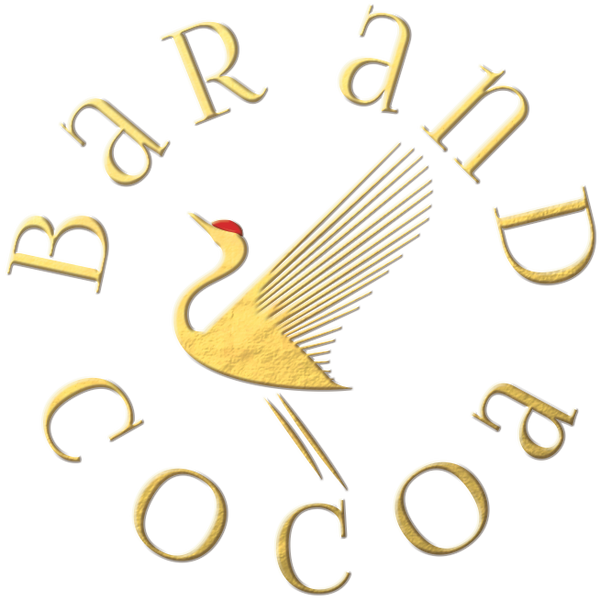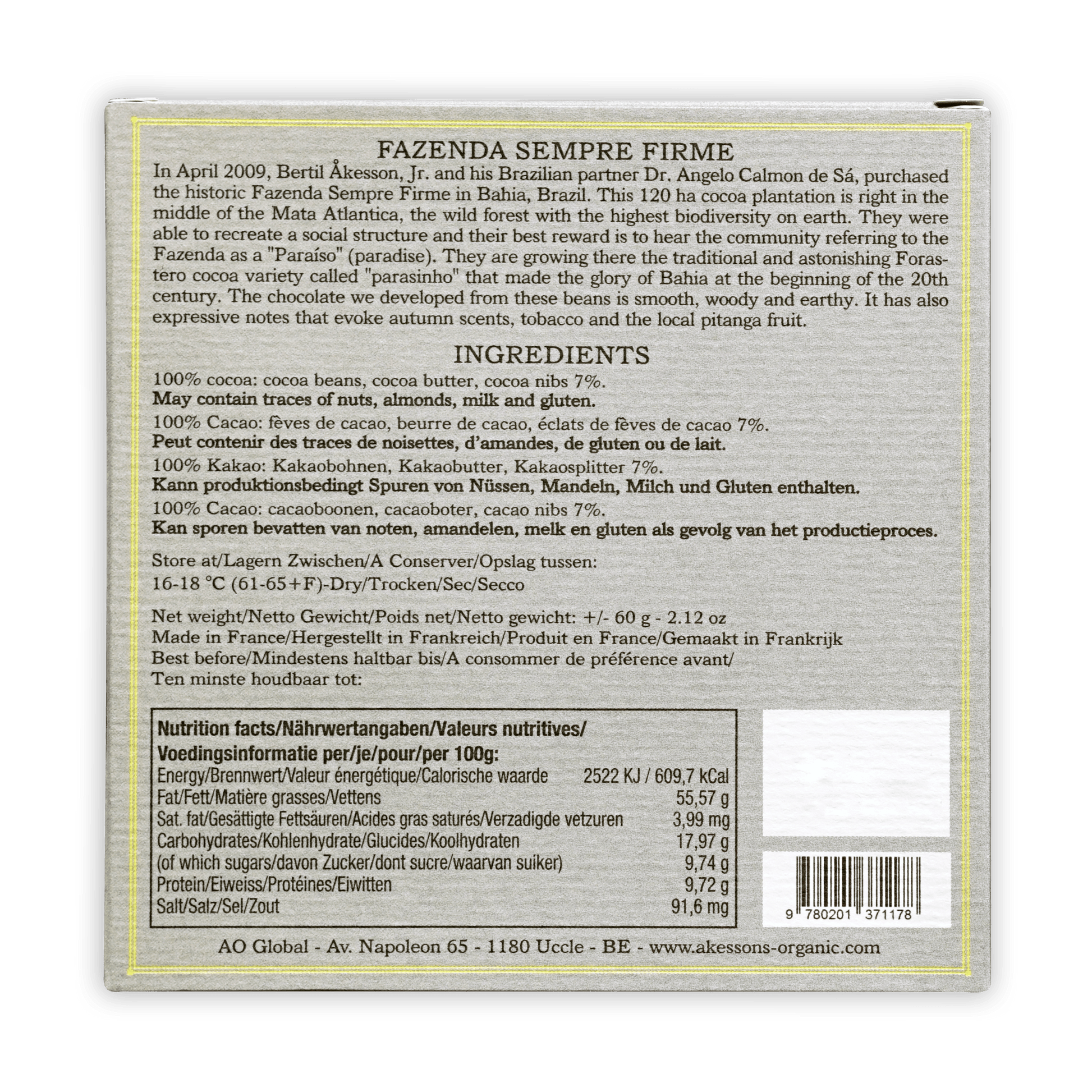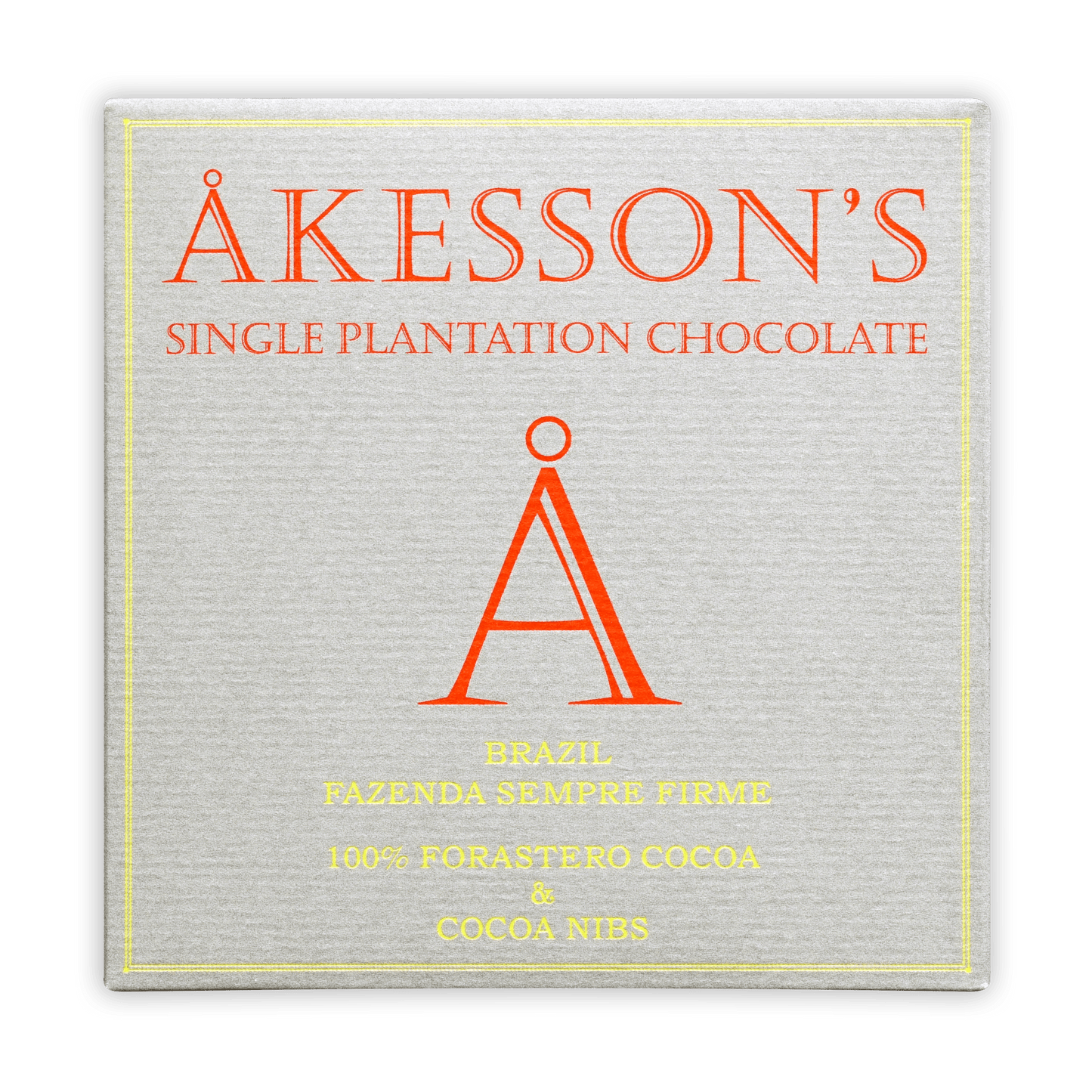
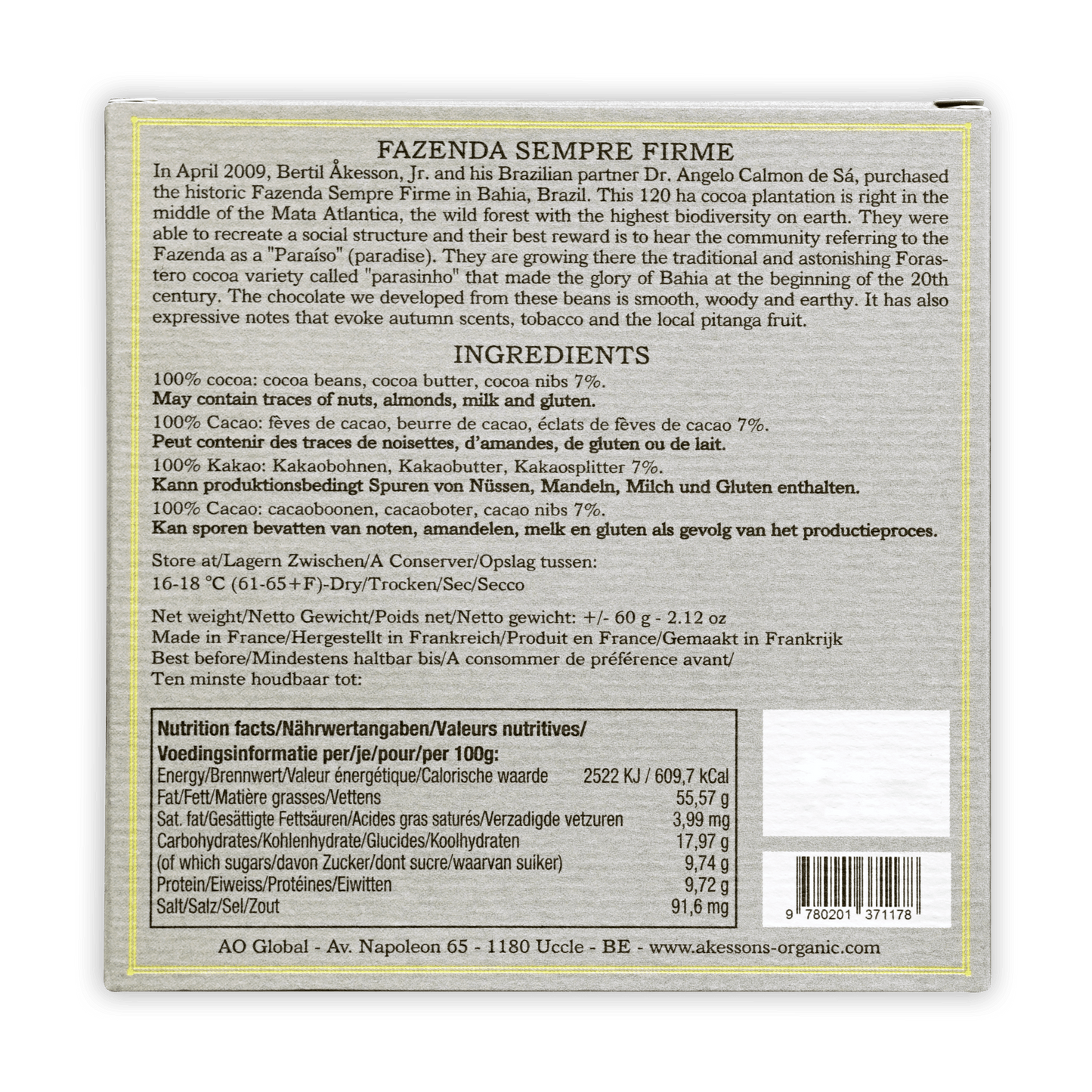
Maker
Akesson'sAkesson's founded by Bertil Akesson is largely responsible for some of the super fine cacao we see coming from Madagascar. Bertil manages several estates in the Sambirano Valley, and also has a few plantations in Indonesia and Brazil. Bertil is one of the pioneers of the bean to bar chocolate movement, and produces a line of single origin and inclusion bars using the spices that also grow on his plantations. Akesson's focuses on high quality cocoa while maintaining sustainable practices. Not only has Akesson's won many awards, other chocolate makers have also won awards for their bars with Akesson's cacao.
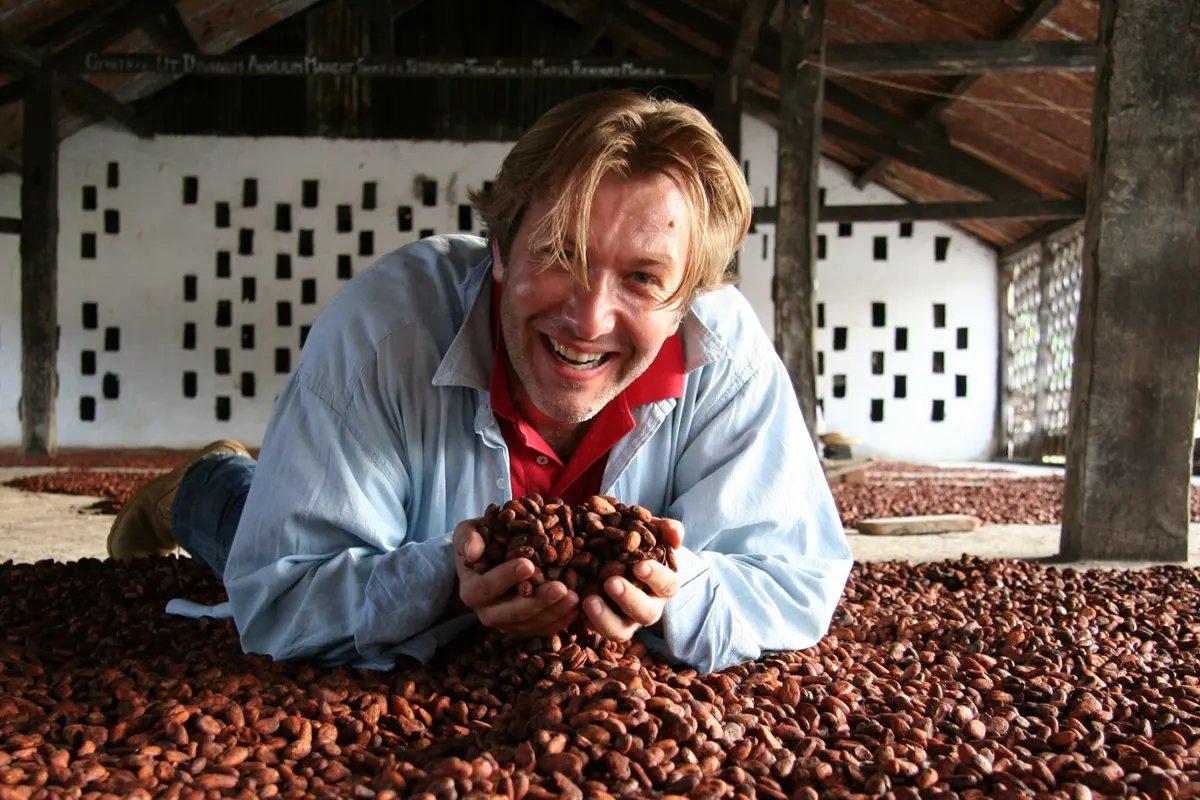
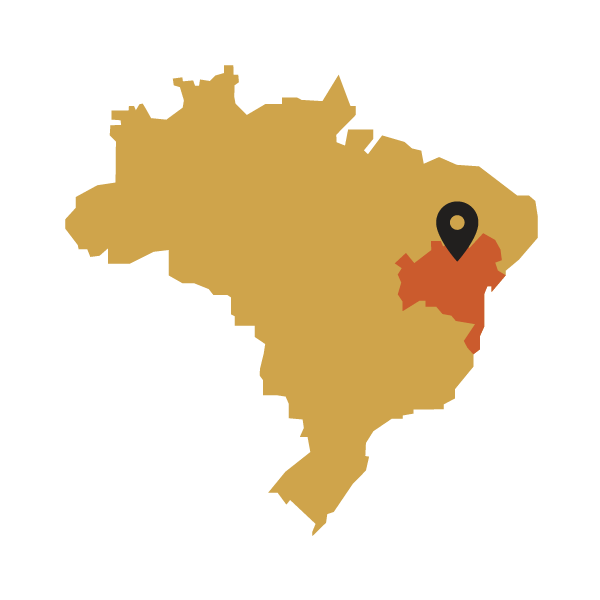
Cacao Region
Bahia, BrazilBahia is one of the largest states of Brazil, located in the east, along the Atlantic coast. Once a monarchial stronghold dominated by slave-centric agriculture and ranching, Bahia is now a domestic manufacturing center and the focal point of Brazil’s re-entry into the fine cacao market. The region was once the largest cacao producer in the country, so reputed that a portion of southern Bahia was nicknamed “Cacao Coast.” Unfortunately, bioterrorism in the 1980’s devastated the country’s crop over the course of just a decade. In the early 2010’s, a number of family farms took it upon themselves to revitalize the local fine flavor cacao industry, which continues to grow annually.
Cacao Estate
Fazenda Sempre FirmeBrazil’s southern state of Bahia is known within the country as the cacao capitol, and for good reason— more than half the country’s cacao is grown in Bahia alone. This is part of the reason why, in April 2009, chocolate maker Bertil Akesson purchased Bahia’s historic Fazenda Sempre Firme. The 120-hectare cocoa plantation is right in the middle of the Mata Atlantica, one of the rain forests with the highest biodiversity on earth. On the farm, the team is growing the traditional forastero cocoa variety called parasinho, which was thought of as the glory of Bahia in the early 1900’s.
Cacao Strain
ParasinhoParasinho, an Amelonado cultivar bears small, round and fairly smooth pods, which turn yellow when ripe. This cultivar is also called Para-Parasinho or Parazinho, and would have formerly been called “forastero;” it’s native to Bahia, Brazil. At the beginning of the 20th century, parasinho was said to have made the glory of Bahia by being such a delicious and unique varietal.
Attention CA Residents
WARNING: This product can expose you to chemicals including lead, which are known to the State of California to cause cancer and birth defects or other reproductive harm. For more information, go to www.p65warnings.ca.gov.
